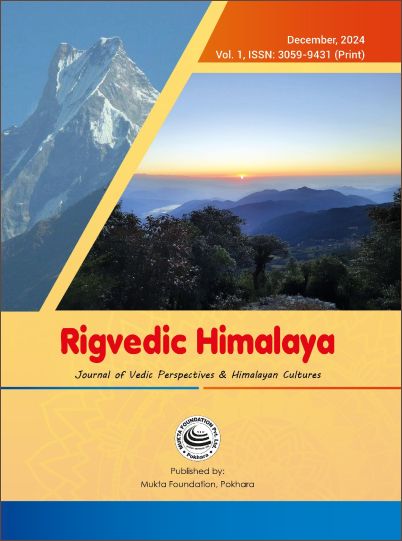The Significance of Trees in the Himalayan Region and in the Rig Veda
DOI:
https://doi.org/10.3126/jorh.v1i1.75194Keywords:
Agni, Fire, Forests, Rig, Trees, VedaAbstract
Trees are among the many elements of nature that are revered in the Rig Veda and honored by people living in the Himalayan region, as well as in other regions of the world. Consequently, this reverence pervades Himalayan culture. Trees are honored in many ways and revered for the strength they embody and for their role in enabling the worship of deities, as they are the source of wood for fires used in offerings, worship, and oblation. Trees are also honored for their essential role in enabling cooking fires and providing warmth.
This paper will offer a brief discussion of sacred trees in the Himalayan region and seek to examine the Rig Veda to determine the significance of trees as expressed in the text, exploring the various characteristics attributed to trees as described in the Rig Veda. For this purpose, the translations by Sri Aurobindo will be used primarily; however, translations by Ralph T. H. Griffith and Wendy Doniger will also be referenced.
Since trees provide the wood used in sacrificial fires, the paper will include a description of Agni, the fire god, and the spiritual seeker's honoring of him as essential to the spiritual quest and as the force behind evolution - both at the physical level and in the evolution of consciousness. Agni as a force for knowledge will be considered and addressed, especially as a force for spiritual knowledge and realization, with the transformative power that this implies.
Sources to be used include Hymns to the Mystic Fire and The Secret of the Veda, both works by Sri Aurobindo. Insights derived from these two books will be discussed as the analysis proceeds. Although the author is not familiar first-hand with the ceremonial rites associated with the Vedas, the paper will attempt to understand the psychological meaning and significance of the hymns and slokas as the descriptive analysis unfolds. Recognizing that the meaning is not readily apparent on the surface of the language and is often more symbolic and intuitive, the author will endeavor to explore the deeper meanings intended in the text.
Downloads
Downloads
Published
How to Cite
Issue
Section
License
Copyright (c) 2024 Mukta Foundation Pvt. Ltd

This work is licensed under a Creative Commons Attribution-NonCommercial 4.0 International License.
This license enables reusers to distribute, remix, adapt, and build upon the material in any medium or format for noncommercial purposes only, and only so long as attribution is given to the creator.




